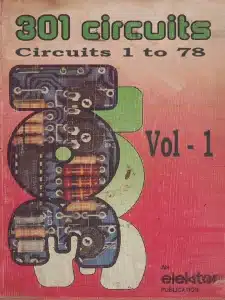Electric Circuits and Signals
Introduction to Electric Circuits and Signals
Electric circuits and signals are the foundation of modern electrical and electronic systems. From household appliances to complex communication networks, these principles govern the flow and manipulation of electrical energy. This article explores the fundamentals of electric circuits and signals, their types, applications, case studies, and practical tips for working with electrical systems. It also examines the evolution of circuit technology, key mathematical concepts, and future developments in the field.
What are Electric Circuits and Signals?
Electric Circuits (Electric Circuits and Signals)
An electric circuit is a closed path through which electric current flows. It typically consists of components like resistors, capacitors, inductors, switches, and power sources (such as batteries or generators).
Types of Circuits
- Series Circuits: Components are connected end-to-end, and the current remains the same throughout.
- Parallel Circuits: Components are connected across common points, and the voltage remains the same across all branches.
- Combination Circuits: A mix of both series and parallel circuits.
- Short and Open Circuits: Short circuits allow excessive current flow due to a bypass, while open circuits prevent current flow due to a break in the path.
Basic Components of Circuits
- Resistors: Control the flow of current.
- Capacitors: Store and release energy.
- Inductors: Oppose changes in current.
- Switches: Open or close a circuit.
- Power Sources: Supply electrical energy.
- Diodes and LEDs: Allow current to flow in one direction and emit light, respectively.
Mathematical Foundations
- Ohm’s Law: V = IR (Voltage = Current x Resistance)
- Kirchhoff’s Laws: Used to analyze complex circuits:
- Kirchhoff’s Current Law (KCL): The sum of currents entering a node equals the sum exiting.
- Kirchhoff’s Voltage Law (KVL): The sum of voltages around a closed loop is zero.
Electrical Signals (Electric Circuits and Signals)
Electrical signals are variations in voltage or current that carry information.
Types of Signals
- Analog Signals: Continuous and variable over time (e.g., sound waves in an audio system).
- Digital Signals: Discrete values, often represented in binary (0s and 1s), used in computing and communication systems.
Signal Characteristics
- Amplitude: The strength or level of the signal.
- Frequency: How often the signal repeats per second.
- Phase: The position of the waveform relative to time zero.
- Duty Cycle: In pulse-width modulation, it’s the ratio of time the signal is high to the total period.
Modulation Techniques
- Amplitude Modulation (AM)
- Frequency Modulation (FM)
- Pulse-Code Modulation (PCM)
- Quadrature Amplitude Modulation (QAM)
Applications of Electric Circuits and Signals
Electric circuits and signals are essential in various industries, including:
Consumer Electronics
Devices such as smartphones, televisions, gaming consoles, and kitchen appliances rely on compact and efficient circuit design. Signals process user input, deliver power, and facilitate communication between components.
Telecommunication (Electric Circuits and Signals)
Electric signals transmit data through wired and wireless channels. Applications include:
- Mobile communication
- Fiber optic networks
- Satellite and radio transmission
- Internet of Things (IoT) networks
Automotive Industry
Modern vehicles are embedded with numerous electric circuits and sensors. Key systems include:
- Ignition and lighting systems
- Infotainment and navigation
- Battery management in electric vehicles (EVs)
- Advanced Driver Assistance Systems (ADAS)
Healthcare (Electric Circuits and Signals)
Medical equipment relies on precise electrical signals to monitor and treat patients. Examples include:
- ECG and EEG machines
- MRI and CT scanners
- Hearing aids and pacemakers
- Remote patient monitoring systems
Industrial Automation
Factories and industrial settings depend on automated systems controlled by circuits. Key components include:
- Programmable Logic Controllers (PLCs)
- Sensors and actuators
- Human Machine Interfaces (HMIs)
- SCADA systems
Aerospace and Defense
Electric circuits power and control avionics, communication, and navigation systems. Signal integrity is critical in mission-critical environments.
Case Study: Electric Circuits in Smart Homes
Problem Statement
Smart homes require efficient circuit design for automation, energy management, and security. Traditional home circuits lacked integration with smart devices, leading to inefficiencies.
Solution
By integrating IoT-enabled circuits, smart homes now use sensors, microcontrollers, and wireless communication to optimize energy usage, enhance security, and improve user experience.
Components Used in Smart Circuits
- Microcontrollers (e.g., Arduino, ESP32): Central control units for managing sensors and outputs.
- Sensors: Detect motion, temperature, humidity, etc.
- Relays and Actuators: Control lighting, HVAC, and appliances.
- Wireless Modules (e.g., Wi-Fi, Zigbee): Enable device-to-device and remote communication.
- Smart Hubs and Voice Assistants: Central interfaces for managing multiple devices.
Outcome
Homeowners experience lower energy costs, increased security, and improved convenience through automated lighting, climate control, and security systems.
Best Practices for Working with Electric Circuits and Signals
Understand Circuit Diagrams
Always refer to schematics before building or troubleshooting circuits. Schematics provide a visual layout of how components are connected.
Use Proper Tools
Key tools include:
- Multimeters: For measuring voltage, current, and resistance.
- Oscilloscopes: For viewing signal waveforms.
- Soldering Kits: For assembling and repairing circuits.
- Function Generators: Produce test waveforms for circuit diagnostics.
Follow Safety Guidelines
- Turn off power before working on circuits.
- Use insulated tools and safety gear.
- Double-check connections before powering up.
- Work in a dry environment and use grounding straps.
Test Before Implementation
Prototype circuits on breadboards to ensure functionality. Testing helps identify issues early and reduces costly mistakes in final builds.
Maintain Good Wiring Practices
- Avoid loose or tangled wires.
- Use heat-shrink tubing and cable organizers.
- Label wires for easy identification.
- Route wires neatly and keep high- and low-voltage lines separate.
FAQS About Electric Circuits and Signals
1. What is the difference between AC and DC circuits?
AC (Alternating Current) circuits have a voltage that varies over time, while DC (Direct Current) circuits have a constant voltage. AC is used in power grids, while DC is common in batteries and electronics.
2. How do resistors affect circuit performance?
Resistors control current flow, prevent overloading, and divide voltage. They are critical for protecting sensitive components and ensuring consistent operation.
3. What is an oscilloscope used for?
An oscilloscope displays electrical signal waveforms, allowing users to observe amplitude, frequency, and distortion in real time.
4. Why are capacitors important in circuits?
Capacitors store and release energy, filter noise from signals, and smooth voltage fluctuations in power supplies.
5. Can I build circuits without a background in electronics?
Yes, many beginner-friendly platforms and tutorials are available. Start with simple kits and gradually explore more complex systems.
6. How are electric signals converted between analog and digital?
Devices called Analog-to-Digital Converters (ADC) and Digital-to-Analog Converters (DAC) perform this conversion, enabling integration between analog sensors and digital processors.
7. What is impedance and why is it important?
Impedance is the total opposition a circuit offers to alternating current, combining resistance and reactance. It is essential in signal transmission and audio design.
8. How does noise affect signals in a circuit?
Noise can distort signals, reduce clarity, and cause errors. Proper grounding, shielding, and filtering are critical for minimizing noise.
Emerging Trends in Electric Circuits and Signals
Miniaturization and Integration
Advances in semiconductor technology enable smaller, more powerful circuits, essential for wearable tech, IoT devices, and medical implants.
Energy Harvesting
Circuits are being designed to generate power from ambient sources such as light, heat, or vibration, supporting sustainable and wireless systems.
AI in Circuit Design
Machine learning algorithms help design optimized circuits by predicting performance, identifying faults, and improving efficiency.
Quantum and Neuromorphic Circuits
Emerging fields like quantum computing and brain-inspired circuits promise revolutionary changes in data processing and problem-solving.
Flexible and Printed Electronics
These allow circuits to be printed on flexible surfaces, opening up possibilities in clothing, packaging, and bio-integrated electronics.
Conclusion
Electric circuits and signals play a crucial role in modern technology, enabling innovations across multiple industries. Understanding their principles, applications, and best practices allows engineers, students, and hobbyists to design efficient and reliable systems. As technology evolves, staying informed about emerging trends ensures continued relevance and effectiveness in electrical engineering pursuits. The future holds promising developments, from AI-assisted circuit design to sustainable energy solutions, making it a vital and exciting field for generations to come.
Related Topics
-
Power Converter Circuit
-
High Voltage Circuit Breakers Design And Applications
-
Theory And Problems Of Electric Circuits 4th Edition
-
The Circuits And Filters Handbook 3rd Edition
-
Understandable Electric Circuits 2nd Edition
Related Topics:
 301 Circuits A Practical Electronic Circuits For The Home Constructor
301 Circuits A Practical Electronic Circuits For The Home Constructor
 Theory And Problems Of Electric Circuits 4th Edition
Theory And Problems Of Electric Circuits 4th Edition
 Understandable Electric Circuits
Understandable Electric Circuits
 Understandable Electric Circuits 2nd Edition
Understandable Electric Circuits 2nd Edition
 The Circuits And Filters Handbook 3rd Edition
The Circuits And Filters Handbook 3rd Edition
 500 Electronic Projects for Inventors with tested circuits
500 Electronic Projects for Inventors with tested circuits
